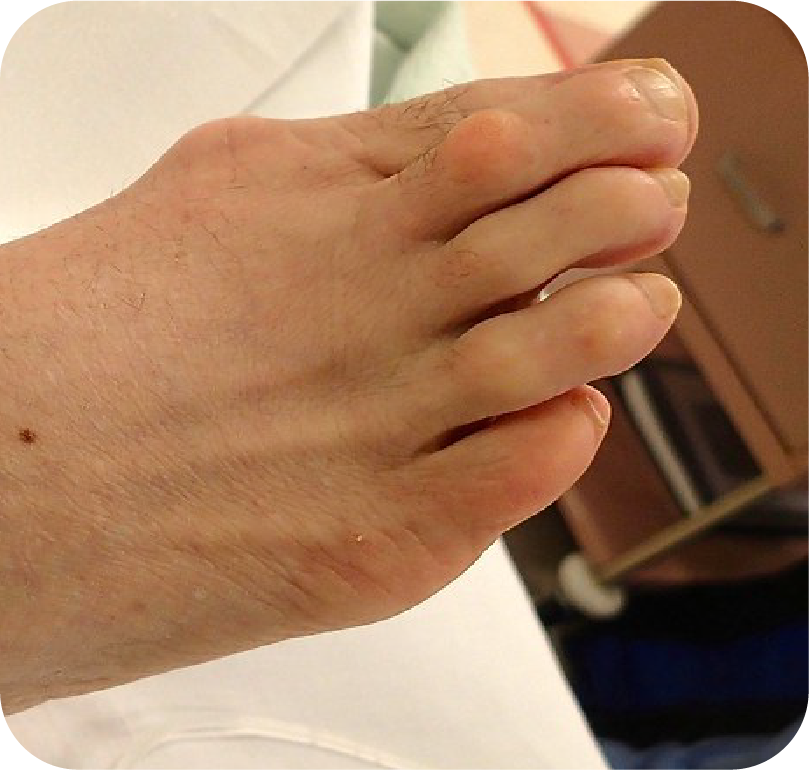Foot and Ankle Deformities

Flat Feet
InformationWhen you have flatfeet the arches on the inside of your feet are flattened, allowing the entire soles of your feet to touch the floor when you stand up.
A common and can be a painless condition, flatfeet can occur when the arches don’t develop during childhood. In some cases, flatfeet can develop after an injury or from the simple wear-and-tear stresses of age.
Flatfeet can contribute to problems in your ankles and knees because the condition can alter the alignment of your legs.
SymptomsPeople with flatfeet rarely have symptoms however, some will experience foot pain, particularity in the ankle or arch. You may also experience some swelling of the ankle. These symptoms may present with activity for people who have flatfeet.

Hammertoe
InformationHammertoe and mallet toe are foot deformities that occur with an imbalance in the muscles, tendons or ligaments that normally hold the toe straight. The type of shoes you wear, foot structure, trauma and certain disease processes may contribute to the development of these deformities.
The hammertoe has an abnormal bend in the middle joint of a toe. Mallet toe affects the joint nearest the toenail. Hammertoe and mallet toe may occur in your second, third and fourth toes.
Relieving the pain and pressure of hammertoe and mallet toe can involve changing your footwear and wearing shoe inserts. If you have a more severe case of hammertoe or mallet toe, you may need surgery to get relief.
SymptomsHammertoe and mallet toe feature an abnormal bend in the joints of one or possibly more of your toes. Moving the affected toe may be difficult or even painful. Corns and calluses may result from the toe rubbing against the inside of your shoes.

Bunion
Possible CausesA bunion is a bony bump that can form on the joint at the base of your big toe. It occurs when some of the bones in the front part of your foot is moved out of place. This causes the tip of your big toe to start to get pulled toward the smaller toes and forces the joint at the base of your big toe to stick out.
Sometimes wearing tight, narrow shoes might cause bunions or make them worse. Bunions may also develop as a result of the shape of your foot, a foot deformity or a medical condition, such as arthritis.
Smaller bunions (bunionettes) can develop on the joint of your little toe.
SymptomsA bulging bump on the outside of the base of your big toe. Swelling, redness or soreness around your big toe joint. Corns or calluses — these often develop where the first and second toes rub against each other. Ongoing pain or pain that comes and goes. Limited movement of your big toe.

